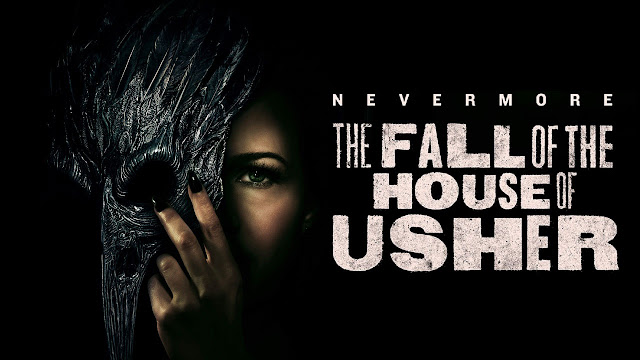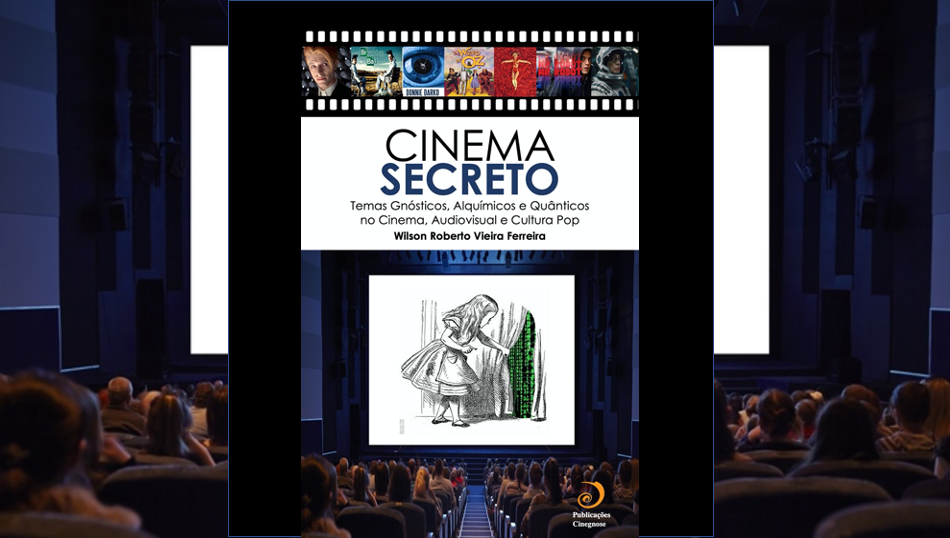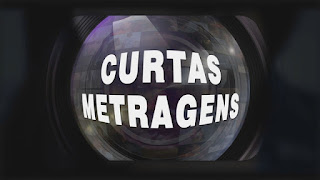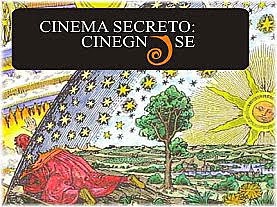 Just as the Western Eastern religions absorb the exotic style and fluidity, Asians appear to adopt the Abrahamic traditions. Such mythological traditions seem to translate best dystopian worlds and ultra-violent futuristic battle of the narratives of "Anime" Japanese. Neon Genesis Evangelion, for example, is a veritable encyclopedia of classic themes of Gnosticism, where man confronts insane gods and indifferent in the scramble for the remaining elements of the origins of the cosmos.
Just as the Western Eastern religions absorb the exotic style and fluidity, Asians appear to adopt the Abrahamic traditions. Such mythological traditions seem to translate best dystopian worlds and ultra-violent futuristic battle of the narratives of "Anime" Japanese. Neon Genesis Evangelion, for example, is a veritable encyclopedia of classic themes of Gnosticism, where man confronts insane gods and indifferent in the scramble for the remaining elements of the origins of the cosmos.Below is a part of the article by Michael Conner "Gnostic Themes in Japanese Anime," published on the site "National Exanimer.com. The text summarizes didactically Gnosticism in four basic myths (Myth of the Demiurge, the fallen soul, the Divine Feminine Salvadore) that are exploited by speculative fiction, from classic films like The Matrix to the Anime (animation) in Japan. In addition, Conner seeks to understand why the rise of gnostic themes in Japanese pop culture.
Michael Conner is writer science fiction American and host of "Aeon Byte Gnostic Radio" an Internet Radio with weekly interviews and discussions on themes of Gnosticism, literature and pop culture.
Gnostics Themes in Japanese Anime
Miguel Conner
Unlike most religions, Gnosticism has no stipulation that its holy heresy be confined to the two-dimensionality of paper. Beyond the lack of any real canonization, its syncretic and parasitical nature has allowed the Gnostic Spirit to manifest itself throughout history in diverse mediums. Furthermore, Gnosis, that awakening knowledge of the divine, is often best served through the artistic expression of the day. Simon Magus, Valentinus, Mani, William Blake and WB Yeats were as much sophisticated poets as they were sages of blasphemy.
In contemporary times, Gnosticism has been as much rebooted by the popularity of Speculative Fiction as it has been by the discoveries of the Nag Hammadi Library and the Gospel of Judas. Speculative Fiction is perhaps the ideal vehicle for Gnostic theology, since both draw heavily from the wells of mythology, psychology and altered states of consciousness.
More than a vehicle, Gnosticism and Speculative Fiction are more of a Valentinian Bridal Chamber union, a marriage made in the creative hells of audacious artists who are sometimes not even conscious they have dipped into the Sethian or Valentinian headwaters. This is apparent in the frenetic, digital storms of the Wachowski brother’s The Matrix, the visionary explorations of Philip K. Dick’s fiction, or the alchemical delirium found in the graphic novels of Alan Moore. Plenty has been written about these and other contemporary Gnostic expressions.
But what has been given little attention is the ripe playground of Gnosticism in a semi-underground form of Speculative Fiction that isn’t even from The West, a seemingly male-adolescent mental masturbation of phallic symbols in the shape of giant robots, tween Aphrodites, dystopian alternative worlds and ultra-violent cathartic cyberpunk.
And that is Anime (Defined by Merriam-Webster as ‘a style of animation originating in Japan that is characterized by stark colorful graphics depicting vibrant characters in action-filled plots often with fantastic or futuristic themes').
There is little evidence that this is a purposeful phenomenon. There are probably two main reasons why Gnosticism has found a hiero gamos with Japanese animation (and this beyond the obvious fact that Anime is already blatantly syncretic and parasitical in its frenzied churning out of products in a Bollywood-fashion to a worldwide audience).
The first reason is that without the marketing Torahs of Hollywood, the already charged imagination of Japanese writers and animators are further unbound to reach deeper into the wells of mythology, psychology and altered states of consciousness.
The second has to do with romance. Just as Westerners enjoy sponging the more mystical elements of Eastern faiths because of their exotic flair and fluidity, Easterners relish adopting the esoteric strands of the Abrahamic traditions that better translate within the polychromatic yet intense fantasy landscapes of Anime. And history reveals that occult symbolism and narrative, as misunderstood as it might be, creates very powerful fiction (Germany being seduced by romanticized Eastern Philosophy in the 19th Century would be the obvious example).
Before delving into some Gnostic Gospels that have mutated into Anime series, a brief four-fold paradigm of Gnostic mythopoeia should be presented as a framework:
1. The Myth of the Demiurge. Creation, the world or even reality itself is controlled by an inferior deity and his agents. These angels (or Archons) have cast a veil of illusion, ignorance or often existential despair over those whom they seek to dominate (and sometimes feed upon). In Classic Gnosticism, the character of the God of the Old Testament was a favorite template for the extramundane villain. He is often referred to as the Demiurge, from the Greek for ‘public-crafter’. In postmodern Gnostic gospels, the Demiurge doesn’t necessarily have to be a divine antagonist, but can take the form of any oppressive entity including aliens, runaway technology and even human institutions. It comes down the question of human control versus human freedom. This myth ignites the question of what is real and what is false in intricate ontological levels (or dimensions).
2. The Myth of the Fallen Soul. A divine seed has fallen into an alien world from a place the Gnostics called The Pleroma (or Fullness). This light-sperm of raw self-actualization resides within every mortal, also known as the Divine Spark. It is what the lesser spiritual creatures of the Myth of the Demiurge crave or have corrupted. Resting in slumber or stupor, the epic quest truly begins when one sentient mortal discovers or is chosen to realize his or her transcendental potential. A messy war for liberation tends to erupt. In Anime and other Speculative Fiction, it usually entails the protagonist stirring to wakefulness by some latent power or gift in order to fulfill a heroic destiny. This myth provokes the question of what is it to be conscious and the levels of consciousness human beings can reach (It should be obvious by now that Gnosticism and Speculative Fiction cogitate wildly on matters beyond traditional science, morality and metaphysics).
3. The Myth of the Savior. It can take two forms. The first is that after awakening to his or her supernatural constitution, the protagonist must not only save those around him or her from the Powers and Principalities that have created the illusionary arrangement, he or she must spread the knowledge (Gnosis) to others so that they share the same freedoms or discover similar abilities. The second form is that a savior figure needs a savior figure, since the relationship of a hierophant to a neophyte is central to Gnosticism (and the caricature of the Oriental wise teacher aiding the hero is expected from Westerners). This myth kindles the question of what it means to be a human; and are all humans truly equal even if some possess greater abilities than others (a theme prevalent in Comic Books, Science Fiction operas and even in such television series like Heroes).
4. The Myth of the Divine Feminine. In Classic Gnosticism, Sophia takes center stage as both a fallen being and a redeemer of mankind. Her incarnation has taken many forms including the Shekinah of God in the Kabbalah, Mary Magdalene in esoteric Christianity, and Gaia in Neo-Paganism. Sylvia in The Truman Show and Trinity in The Matrix are two of the more famous one in the Science Fantasy realms. The incarnation can be the protagonist, the teacher of the protagonist, or even various prisms of the protagonist. She rescues or is rescued or both in the battles against the agents of oppression and the breaking through the false realities. And it’s hard to deny Anime’s obsession and confusion with the feminine and sexuality in general (which departs from or perhaps complements the Gnostic attitude of distrusting sex). This inflames the question of the different levels of love, friendship and individuality in what might appear to be a cold and indifferent universe.

In all Gnostic epics, these mythopoeia tend to overlap, just as they may suddenly materialize and vanish in the cosmic plotlines. Like the dream world language of mythology, roles and symbols often shift in the fool’s errand of understanding human existence, even, in the case of Anime, they are surrounded by prismatic special effects, purgative gore, and wanton sexual imagery.
There is one new element that permeates the Four Myths very relevant to Gnostic Anime and Speculative Fiction. In their struggle to understand what truly defined humans and their destiny in the cosmos, the Classic Gnostics cogitated on the tripartition of man—matter, mind and spirit. Contemporary Gnosticism weaves into this triad The Machine—advanced technology, artificial intelligence, cybernetics, virtual reality, etc. The Machine adds a deeper philosophical component, as gods make man and man makes The Machine, and all three frequently find themselves wondering who is in control and who really exists in each other’s perception. The Matrix Trilogy and the writings of Philip K. Dick certainly focus on this modernist Gnostic dispensation.
Here is some of the major Gnostic Anime:
Neon Genesis Evangelion: Humanity battles angels not only for its existence but its very soul. On the surface, this is blatantly Gnostic. Further on the surface, this is the typical Anime boilerplate of a post-apocalyptical world, dueling giant robots and teen-angst drama. But Neon Genesis Evangelion harbors an even deeper stratum of Gnostic themes from various schools (Classic, Jungian, Dickian and Kabbalah).
The origins of humanity are very similar to the Gnostic Valentinian cosmogony, where the fall of Sophia from The Pleroma creates the universe and its denizens. In Neon Genesis Evangelion, Sophia is replaced by a being called Lilith, whose material remnants are discovered in Antarctica and then safeguarded by modern man in Japan, deep underneath Tokyo 3. Soon afterwards, civilization suffers Judgment Day when another being called Adam (echoing the heavenly Adamas of Gnosticism, Manichaeism and Kabbalah) somehow crashes into Earth. Half of mankind is destroyed, and the survivors are forced to live underground. Global warming and other cataclysms cripple the planet’s resources. A despotic one-world government rises from the ashes.
And then come the Angels to make matters worse.
These creatures seek to retrieve the remains of Lilith and Adam from the clutches of mankind, since they are also their primordial Mother and Father. The Angels want the same thing the leaders of humanity want—reintegration with Lilith and Adam in order to create a collective, godly consciousness that will rule supreme. While human scientists attempt to unlock the essences of Lilith and Adam, they also utilize part of their titanic bodies to create monsters called Evangelion units (or Evas) in order to repel the divine invasion. Evas appear like the stereotypical sleek, giant robots but are actually bestial demigods that can conjoin their sentience with human agents. This all makes for grandiose yet brutal battle scenarios that further ravage civilization, since the Angels don’t incarnate on Earth as winged dandies but more like Lovecraftian nightmares.
Only certain gifted youths can pilot the Evas; and they all happen to be dysfunctional 14 year olds. The main protagonist is Shinji Ikari, a tortured adolescent who not only becomes the savior of mankind but a cipher where many psychological and existentialist dilemmas can be funneled through. His sister-wives are the tempestuous Asuka Langley (a red-headed Mary Magdalene symbol) and the astral Rei Ayanami (silver-haired, mystical Sophia symbol). These youths not only undergo several classic stages of human and hero growth maturity, muddled by their underdeveloped spiritual and physical love for one another, they represent the confusion of those losing innocence in a world of not only insane uncaring adults but insane uncaring deities.
Neon Genesis Evangelion pushes all envelopes of Gnostic exploration throughout phases of brutal eschatons, torn and tangled realities, and psychological character studies of post-industrial alienation through extensive internal monologue, all bathed by the stench desperation from a doomed civilization. The series also takes the audience into the borderlands of insanity and theological wastelands through a cast of jaded and often supernatural characters that storm the anti-heroic trinity of Shinji, Asuka and Rei (and their psyches eventually being absorbed first into the Evas and later into the Angels themselves). From surviving the false realities of high-school to traveling the heavenly planes to battle pre-Creation horrors, Neon Genesis Evangelion is an encyclopedia of Gnosticism. All of this is sandwiched between the potential of the human spirit to reach unattainable heights to the sheer terror the universe and its paradises have prepared for humanity’s short reign.
 Because they are mnemonic records of spirituality and Light of the species, the archetypes naturally aspire to transcendence. But Ad-Gnosticism (Gnosis + Advertising), like any entertainment industry, the capture and confined within the instrumentality of trade. A prosaic example of the action of Ad-Gnosis is the new video advertising a brand of dog food.
Because they are mnemonic records of spirituality and Light of the species, the archetypes naturally aspire to transcendence. But Ad-Gnosticism (Gnosis + Advertising), like any entertainment industry, the capture and confined within the instrumentality of trade. A prosaic example of the action of Ad-Gnosis is the new video advertising a brand of dog food. 






 quarta-feira, dezembro 30, 2009
quarta-feira, dezembro 30, 2009
 Wilson Roberto Vieira Ferreira
Wilson Roberto Vieira Ferreira


















![Bombas Semióticas na Guerra Híbrida Brasileira (2013-2016): Por que aquilo deu nisso? por [Wilson Roberto Vieira Ferreira]](https://m.media-amazon.com/images/I/41OVdKuGcML.jpg)
















